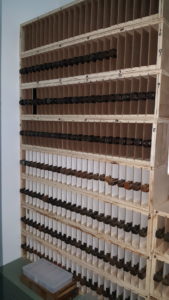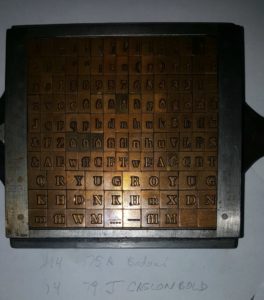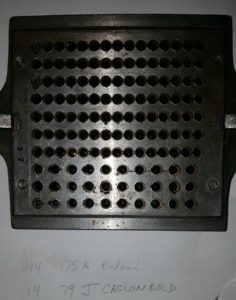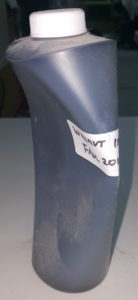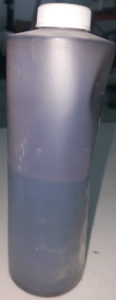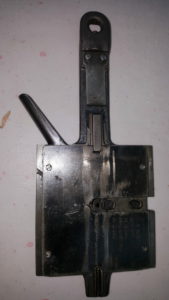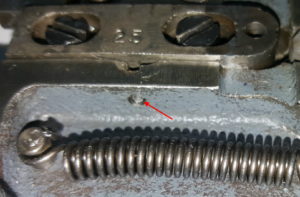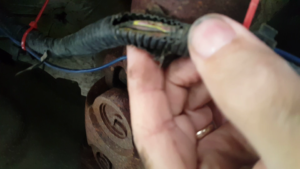Thanks to Mark K. Digre on the Letterpress mailing list, I think the mystery of the strangely-sized cellular matrices has been solved!
The mechanism for using this matcase is described in US patent number 1079321. Essentially, the caster is fitted with longer locking racks which extend beyond the airpin blocks to the rear and to the left of the caster. The extensions on the racks have teeth and locking dogs which correspond to the 0.3″ spacing of the oddball matrices. Pneumatic cylinders are used to set these locking dogs, and also to suppress the standard mechanically-operated dogs, and the air for this is timed by a valve operated by a supplementary cam on the main camshaft.
A manual valve either leaves this system completely off, for normal casting, or allows air to the pneumatics for the front airpin block. The position of the front jaws then determines whether the rear airpin block uses the standard or modified locking dog, thus providing for the different spacing of the bottom three rows of matrices in the matcase.
Overall the system appears rather awkward, and the new racks and locking dogs would be subject to a lot of wear since each time they lock, they would have to move the rack up to 0.1″ from the standard position selected by the airpin to the 0.3″ grid location, against the force supplied by the Pin Jaw Tongs Spring (57E) and the Jaw Tongs Spring Box (26E).
At least this was an improvement over US patent number 1094678, which fitted the back of the matcase with extended cones to catch the centering pin even when grossly mispositioned and drag the matcase to the correct location. This system required the cone holes to not be on the 0.3″ grid because that would put the standard grid locations too far from the desired locations and the centering pin would not be able reach the cone hole, even these grossly enlarged ones. As a result, the cone holes were off center in the mats which meant in turn that the mats could not be so freely repositioned in the matcase. This system would cause a great deal of wear to the centering pin and the cone holes of the mats, because this final positioning would be pulling against the Jaw Tongs Spring Box (26E).
I also found the definitive description of this in my copy of The Monotype System (second edition, 1916, by Lanston Monotype Machine Co.), sections 526-535 (pages 227-231).

